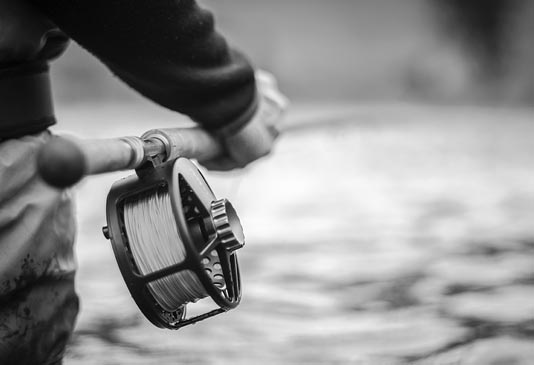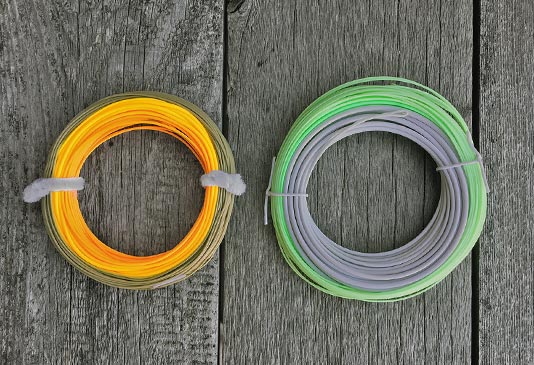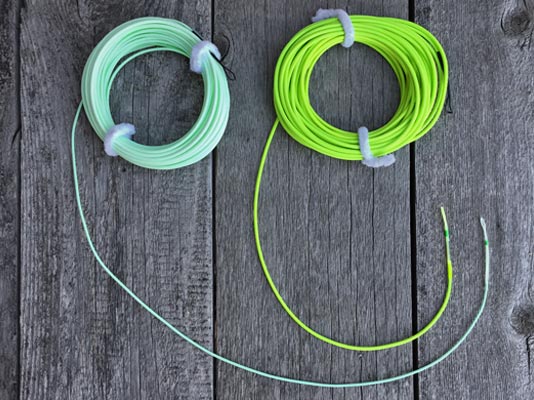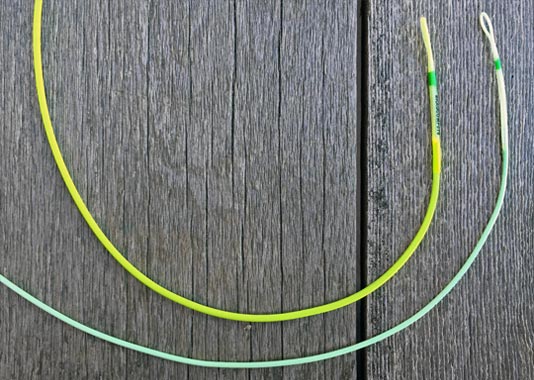Spey Lines 101
Sean Visintainer - 10/04/15

Making Sense of Spey lines.
Ask 20 spey casters what their preferred line is for spey casting... you'll get 20 different answers. The question we get the most is, "What spey line should I get?" To answer that question you really need to ask yourself, "What method of fishing do I prefer to do?" Do you like the tight line grab of a swung fly? Or do you like dredge and rack up more numbers of fish? Now, typically this a huge point of contention for some anglers, I personally don't really give a crap how you catch fish, and I can certainly tell you I like to catch fish by every tactic, not just one method.
Lets look at the 4 major spey line categories in general, they are split into 2 categories:
All-in-One Spey Lines

Traditional Spey Lines
Airflo Delta, Airflo Ultra Spey RIO Short Head, RIO Unispey, RIO InTouch Longhead Spey
- Think of this line as a big ass weight forward line for spey rods.
- This line is all in one, head and running line. No loops or pieces to add to it other than your leader.
- Traditional spey lines are perfect for classic steelhead flies (think green butt skunks or skaters).
- They can cast a sink tip but are not the best at it by any means.
- Anglers can fish leeches and heavy flies with a traditional spey line, but they are harder to lift and turnover.
- The angler does not have to strip as much line back in before they re-cast.
- More room is need for the "D-Loop".
- The casting stroke is bigger and requires more energy.
- Can use polyleaders or mono leaders. Floating - sinking polyleaders can be used.
Utility Style Spey Lines
RIO Switch, RIO Switch Chucker, Royal Wulff Ambush, Airflo Speydicator
- Think of utility spey lines as the "Leatherman" of spey lines. They can do a little of everything, but not anyone thing perfectly.
- Utility lines tend to lend themselves better for nymphing in my opinion.
- Moderate sink-tips can be used, but probably not the biggest in your arsenal.
- Floating or sinking polyleaders can be used when swinging. Mono as well.
- Usually able to chuck bigger bugs.
- The head length of utility lines is usually shorter and more shooting head style compared to traditional spey lines.
Shooting Heads - Used with Running Line

Skagit Heads
Airflo Skagit Compact, Airflo Skagit Switch, RIO Skagit Max Short, RIO Skagit Max, RIO Skagit Max Long
- Must be used with a running line.
- Designed to be used with a sink-tip. NOT a polyleader!
- Meant to chuck some meat, leeches, whether unweighted or the biggest in your box.
- Works well in tight quarters. Little to no room is needed for back cast.
- Punches through wind.
- Skagit heads have a greater mass in a shorter area which creates more load on the rod.
- Angler does have to strip running line back to head area. Some folks don't like that, I don't think it's a big deal.
- Skagit heads also come in intermediate formats for dredging extra deep.
Scandi (Scandinavian) Heads
Airflo Rage, Airflo Scandi Compact, RIO Scandi, RIO Scandi Short
- Must be used with running line.
- Designed to be used with polyleaders. Polyleaders are coated leaders that come in floating or sinking formats. Just add tippet.
- Longer and finer than Skagit heads.
- More of presentation style shooting head for traditionals and skaters.
- Works well in tighter quarters with little to no room for D-Loop.
- Will work okay for nymphing.

These are two identical grain weight shooting heads. Notice how the brighter green skagit (top line) is thicker and beefier in the tip section versus the scandi style. Remember the skagit is for sink-tips and big junk. The scandi is more for finesse and traditionals.
